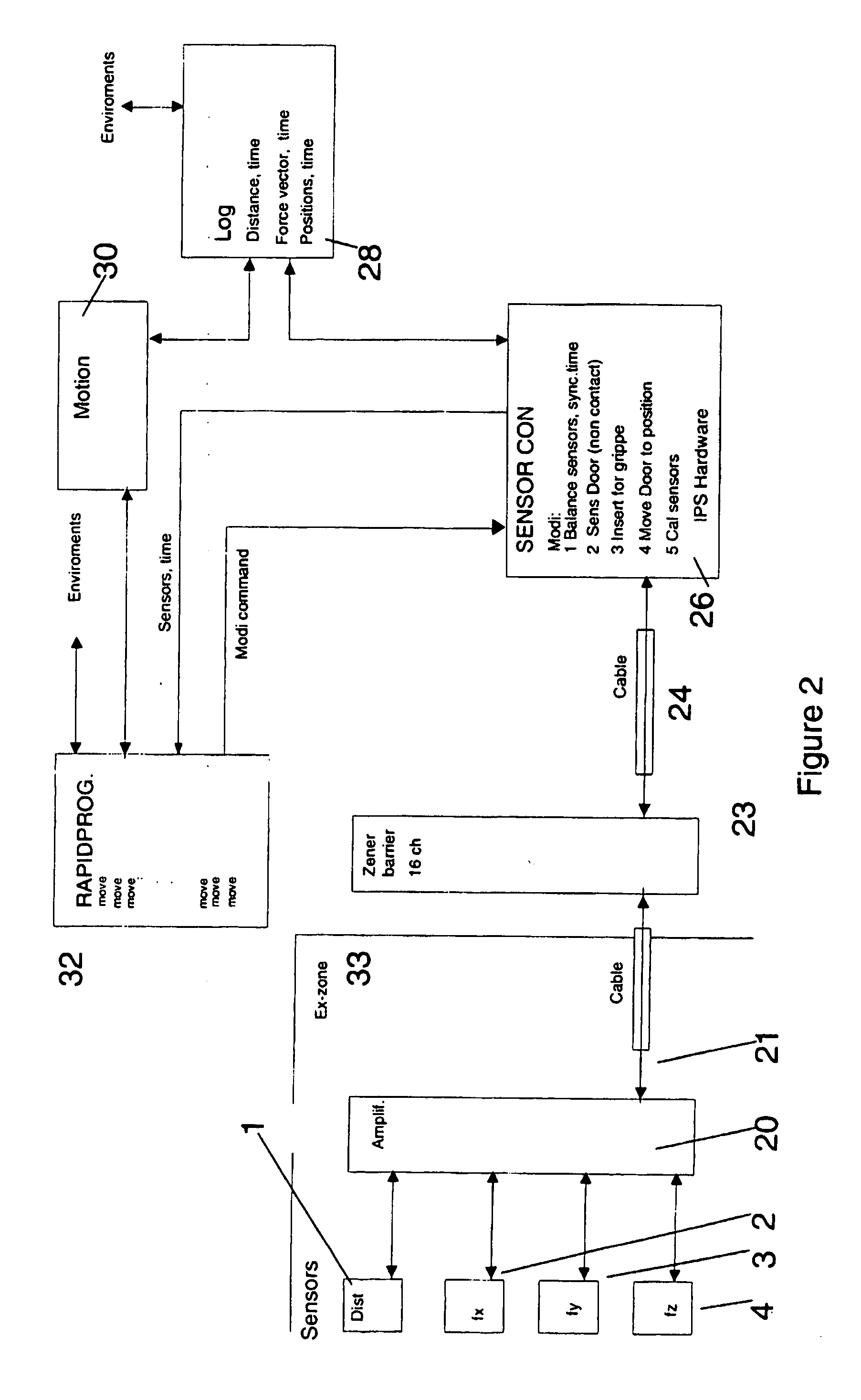Door Opener Arrangement for Use with an Industrial Robot
a technology for industrial robots and door openers, applied in computer control, program control, instruments, etc., can solve the problems of difficult in practice to sense the location of objects to be painted, difficult problems, and limited interior painting automation on automotive lines, etc., to achieve accurate and efficient door opener arrangements, reduce paint quality problems, and facilitate painting operations.
- Summary
- Abstract
- Description
- Claims
- Application Information
AI Technical Summary
Benefits of technology
Problems solved by technology
Method used
Image
Examples
Embodiment Construction
[0035]FIG. 1 shows a view from in front of a process area of a production line that includes a coating operation, such as a paint booth. FIG. 9 shows a view from above looking down on a similar coating process. FIG. 1 shows a vehicle body 15, a robot 8 comprising a first arm arranged for painting, and a second arm 10 of a moveable assembly 5, a door opener arrangement, is mounted beside the painting robot. Typically the vehicle body is moved into, through and out of the process area by a transport device such as a conveyor belt or chain or the like. The second arm 10 of the moveable assembly 5 has a non-contact sensor member 1 mounted at one end, also described in respect of FIGS. 5, 6 below. The figure further shows that the vehicle has at least one door 7a, and the position of a groove for a window 6 of door 7a is indicated. The window groove 6 is the exemplary target for a door opener to insert a rod, claw or finger with which to take hold of the door and open it or close it. The...
PUM
 Login to View More
Login to View More Abstract
Description
Claims
Application Information
 Login to View More
Login to View More - R&D
- Intellectual Property
- Life Sciences
- Materials
- Tech Scout
- Unparalleled Data Quality
- Higher Quality Content
- 60% Fewer Hallucinations
Browse by: Latest US Patents, China's latest patents, Technical Efficacy Thesaurus, Application Domain, Technology Topic, Popular Technical Reports.
© 2025 PatSnap. All rights reserved.Legal|Privacy policy|Modern Slavery Act Transparency Statement|Sitemap|About US| Contact US: help@patsnap.com



